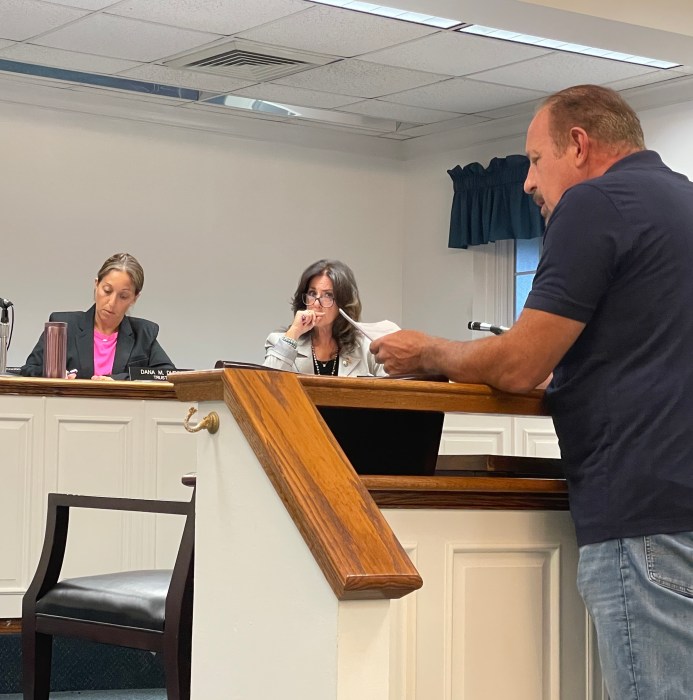The final 2013 lecture in the John A. Gable series was somewhat different from past lectures. The May 16 lecture showcased Xiomaro’s (pronounced SEE-oh-MAH-ro) wonderful and inspiring “How I love Sagamore Hill” photo collection. Commissioned by Sagamore Hill National Historic Site, and displayed in collaboration with the Oyster Bay Historical Society at the Koenig Center, “How I love Sagamore Hill”, derives from Theodore Roosevelt’s well-known quote to his wife Edith on the day before his death.
During February 2012, Xiomaro was given unfettered access to Sagamore Hill as the home was being emptied of its contents to accommodate a $7 million renovation project. Each photo was introduced by a written narrative created by Xiomaro to introduce and highlight the life of the 26th president, while illustrating the importance of his home.
Delving through the home with his Nikon D200 camera, Xiomaro was on a mission to reveal the spirit of Sagamore Hill, and ultimately of TR and his family, while employing an artistic approach. Even though Sagamore Hill may have appeared to be relatively sparse at the time, the house revealed complex detail in its overall design, and a creative integration between the structure and remaining artifacts. You could sense that the furnishings sat patiently around his camera in no rush, waiting to tell their own story. Taking 144 photos over a seven-day period, Xiomaro made the Roosevelts’ home “pop” with life.
The Gable attendees saw 20 photos as a sampling of this creativity. Xiomaro’s curiosity sought out the servant quarters, and included “Cooks Bed Room.” This photo revealed a small and confined space with geometric design and personality within the sparse furnishing of a bed. Xiomaro was able to capture life at Sagamore Hill, which included more than just the Roosevelts. Life there wasn’t always filled with dignitaries or powerful men of politics. A family lived there with varied complexions, and Xiomaro strove to capture this detail in a unique way. Some of the servants were seasonal immigrants hired by the Roosevelts to help with the laundry and household duties.
Others stayed for 30 years and would have become more involved with the family. Walking through these spaces, Xiomaro’s photos brought to life what Sagamore Hill may have been like when TR was there, and certainly during the time he was away being Teddy Roosevelt.
Seeing the “North Room” or the “Library”, relatively barren from the days when TR worked there, indicates a more intimate and domestic nature to the home. In an eerie way, you can imagine one of TR’s children sitting on his lap in those rooms, telling Daddy about their day playing in the fields with Jack, or another family dog. At the same time, you can see the watchful eye of “Colonel Roosevelt”, painted by Fedor Encke, with all of its gold, amber and ruddiness of face, holding court and watching over the North Room.
Without abundant furnishings, Sagamore Hill jumps out at you through Xiomaro’s eyes with dramatic color, texture and intricate wood and molding detail, highlighting the beauty of the home and lives of the Roosevelts. Such detail could never be witnessed behind stanchions and velvet ropes. A photo of “TR’s Shower”, displaying four porcelain controls, enables one to realize the humanity of TR. Larger than life in everything that he did, from politician, writer and president; here he is depicted as an ordinary man in his home.
The artistic view of the last original “Wall Papering” in the North Room, perhaps this writer’s favorite, for its color and revealing patterns, show two different peacock forms, trying to hide in the detail. We can’t leave out the “Green Globe” from the School Room, for its significance either. Here, you can not only visualize the surface bumps on the globe, but actually feel them through the photo. Wear and tear created by real-life finger turning, perhaps while viewing Cuba, Panama or Europe, enables the viewer to see TR at work, managing foreign policy.
The “TR” initialed in a bookshelf on the third floor Gun Room symbolizes the love of books that Roosevelt possessed. Reading a book a day, this representation reveals the love of words that TR carried in his heart. You can hear TR speak out from his autobiography, “…at Sagamore Hill we love a great many things such as birds, trees, rifles and books, and all things beautiful… and of course, children, hard work and the joy of life. We love books, but children are better than books.” That quote explaining his loves radiates from the simple shot. Xiomaro further captures this feeling with his “Little Room and Alice’s Room”, “Door Locked” photo. One of the Roosevelt children, probably Quentin, scrawled these words with paint across the door, proclaiming his desire to keep his hideaway private from his sisters. These two words on the fine wood door commands intruders to stay out of his private world, and brings the six Roosevelt children alive, perhaps, running down the hallway, with child-like, playful laughter.
Xiomaro explained, “It is interesting to create images as a way to examine people and explore what is important to them. The meaning behind such images with the external elements, such as texture, patterns and color, can be arranged to conjure up elusive subjects like a person’s spirit or sense of the place they inhabit. So much of the Roosevelt family’s personality is revealed by the house.” A separate visit was made a few days later to the Oyster Bay Historical Society to experience the photos in all of their beauty and detail, which was essential to writing this piece.
A true modern day renaissance man, Xiomaro is a musician, attorney by day, and passionate artist all the time. He is as interesting to speak with as his work is to view. Tom Ross, superintendent of Sagamore Hill National Historic Site, previously stated he first came across his work when Xiomaro was commissioned to take photos Weir Farm in Wilton, CT, home of J. Alden Weir, a 19th-century American impressionist painter. “Weir Was Here-Secret Rooms, Doors and Windows” became the output of that assignment when Xiomaro was selected as An-Artist-In-Residence during March 2011. Those photos as well as the Sagamore Hill collection can be viewed on his website, xiomaro.com. It is strongly suggested to visit the Oyster Bay Historical Society’s Koenig Center at 20 Summit Street before How I Love Sagamore Hill departs on June 9.
Visit the exhibition to witness a remarkable vision of TR and Sagamore Hill. Exhibit hours are Tuesday-Friday, between 10 a.m.-2 p.m. The weekends offer exhibition hours of 11 a.m.-3 p.m. on Saturdays and 1-4 p.m. on Sundays. A special thank you must be given to Philip Blocklyn of the OBHS for his insightful commentary and fantastic job of selecting wonderful speakers for the 2013 John A. Gable lecture series.
Xiomaro will begin his next project of capturing the spirit of William Floyd’s Fire Island home. Please visit Xiomaro.com for some fantastic and inspiring American culture and excellent artwork. “How I love Sagamore Hill” should not be missed.

































